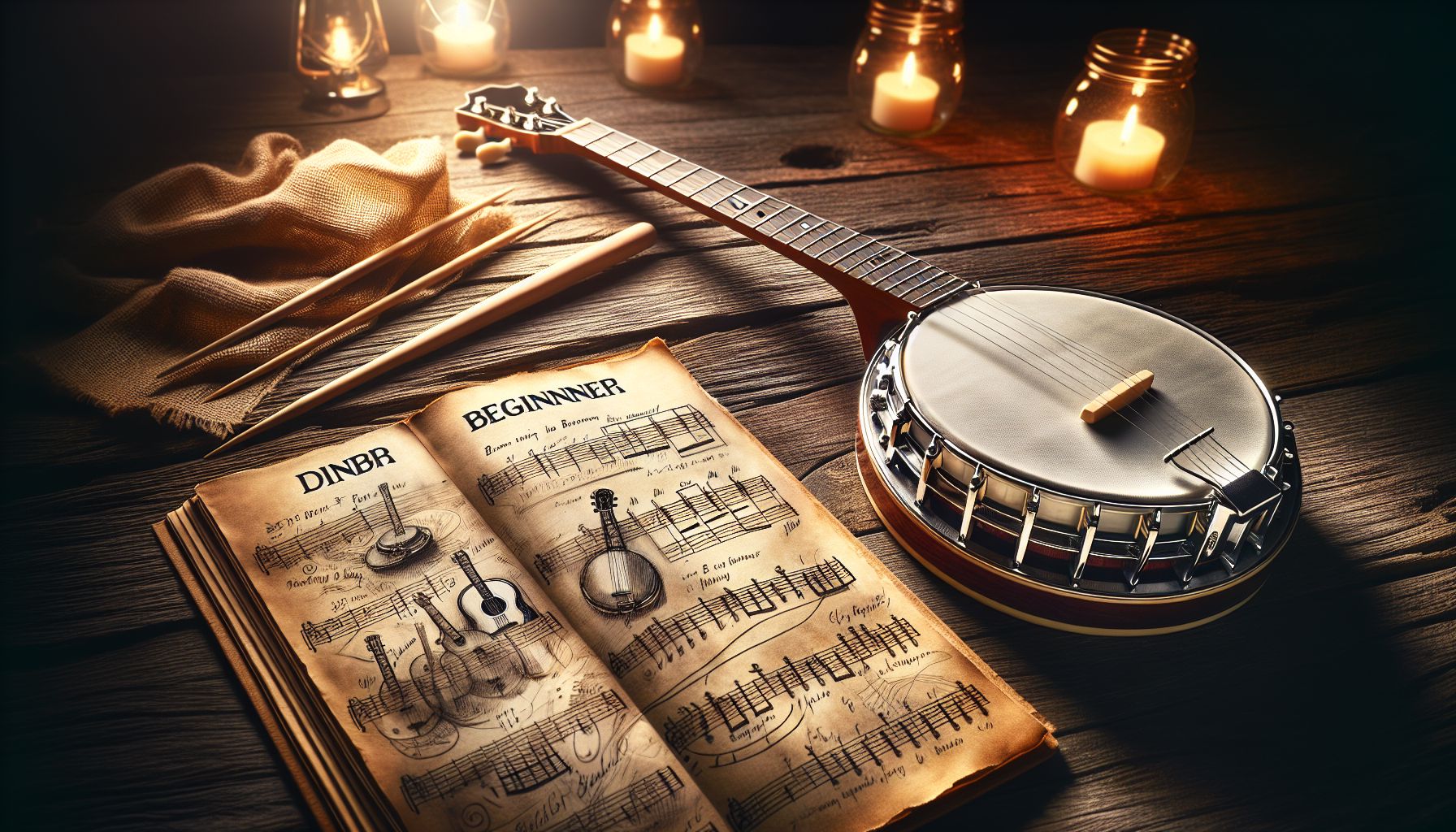Are you drawn to the magical melodies of bluegrass, folk, or country music? Have you ever found yourself captivated by the distinctive twang of a banjo? Well, my friend, you’ve come to the right place! In this beginner’s guide, we will delve into the enchanting world of banjo and learn all about this incredible instrument. So, grab your five-string banjo and let’s get started!
Introduction
The banjo dates back to the 18th century and was brought to America by African slaves. It quickly gained popularity and became an integral part of American traditional music. Today, it’s widely recognized for its unique sound, which adds a delightful flavor to various music genres. So, what makes the banjo so special? Let’s dive into its structure and components.
Anatomy of a Banjo
A banjo typically consists of five strings, although there are variations with fewer or more strings. The most common type is the five-string banjo, which is what we will focus on in this guide. The strings are stretched across a circular head, called the banjo head, which is usually made of synthetic material or animal hide. The neck of the banjo is attached to a pot, which can be made of wood or any resonant material.
The neck of the banjo is where you will find the frets, which help you produce different notes by pressing your fingers on the strings. At the end of the neck, there is a tuning peg for each string, allowing you to adjust the pitch.
Playing the Banjo
Before diving into the world of intricate fingerpicking and complex melodies, let’s start with the basics of playing the banjo.
Holding the Banjo
First, find a comfortable sitting position with the banjo resting on your lap. Your left hand will be on the neck, while your right hand will be responsible for strumming or picking the strings.
Tuning the Banjo
Ensuring your banjo is properly tuned is essential. The standard tuning for a five-string banjo, from the lowest to the highest string, is: G, D, G, B, D. You can use an electronic tuner or a tuning app to help you achieve the correct pitch for each string.
Picking Techniques
There are various picking techniques for the banjo, but let’s focus on the two most common ones: fingerpicking and using a plectrum.
Fingerpicking
Fingerpicking involves plucking the strings with your fingers. The most common fingerpicking style is called “Scruggs style,” named after Earl Scruggs, a renowned banjo player. Initially, this technique may feel awkward and challenging, but with practice, your fingers will become more dexterous.
Plectrum
A plectrum, often referred to as a pick, is a small plastic or metal device worn on the fingertips of your right hand. Using a pick allows for a different sound and bright attack. Experimenting with different pick shapes and thicknesses will help you find the right fit for your playing style.
Learning Resources
When starting your banjo journey, it’s essential to explore various resources and find the learning method that suits you best. Here are a few avenues you might consider:
-
Instructional Books: Many banjo educational books cater to beginners, providing detailed exercises, diagrams, and musical notation to guide your learning.
-
Online Video Lessons: Platforms like YouTube offer a plethora of banjo tutorials, taught by experienced players who share their tips and techniques.
-
Private Lessons: Enrolling in private banjo lessons can be immensely beneficial. Professional banjo tutors can provide personalized guidance and feedback, helping you progress more efficiently.
-
Online Banjo Communities: Participating in banjo forums and joining online communities of fellow banjo enthusiasts can be an excellent way to connect with like-minded individuals, ask questions, and seek advice.
Practice, Patience, and Perseverance
Learning any new instrument requires practice, patience, and perseverance. The banjo is no exception. Here are some tips to keep in mind as you embark on your banjo journey:
-
Start Slow: Begin by practicing basic strumming patterns and simple melodies. Gradually increase your speed as you gain more confidence and skill.
-
Develop a Practice Routine: Create a dedicated practice schedule and stick to it. Consistency is key when it comes to mastering any instrument.
-
Enjoy the Process: Learning to play the banjo should be an enjoyable experience. Explore different music styles, experiment with melodies, and embrace the joy of making music.
-
Attend Jam Sessions: Joining jam sessions with other musicians is a fantastic way to improve your playing and learn from more experienced banjo players.
Conclusion
As you delve deeper into the world of banjo, you’ll realize that this magical instrument has a lot to offer. From toe-tapping bluegrass tunes to soulful folk melodies, the banjo has the power to captivate and enchant both players and listeners alike. So, strap on your five-string banjo, embrace the challenge, and let the unforgettable banjo sound be the soundtrack to your musical journey!
Remember, the key to becoming a proficient banjo player lies in consistent practice, a hunger for knowledge, and an unwavering passion for music. Now, go ahead and strum those strings, and watch as your banjo playing skills soar to new heights!


